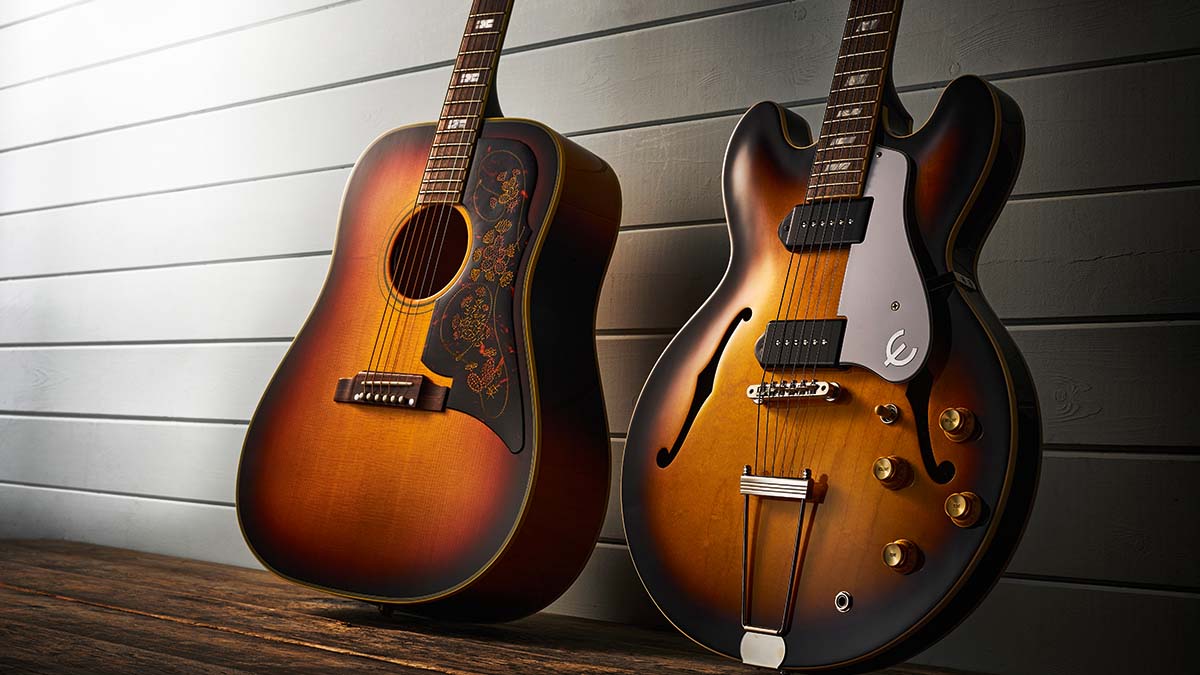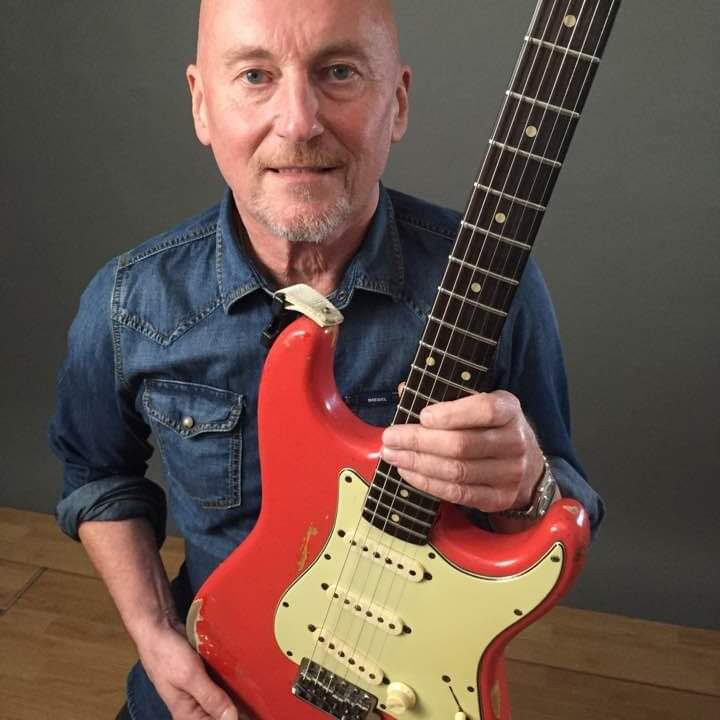Guitar World Verdict
Two exemplary US-built guitars that are quite legendary in their own right, the Casino and Frontier exude class and are hopefully a sign of more to come from Epiphone's high-end line.
Pros
- +
Fabulous-looking, big-sounding acoustic.
- +
Balanced range of sophisticated tones.
- +
Excellent plugged and unplugged.
- +
The Casino's back and built in the USA.
- +
Great range of tones, distinctive from its ES-330 sister.
- +
And perhaps more desirable due to solid gold heritage.
Cons
- -
Might need height shims under the Casino's low-mounted pickups.
- -
Hefty price tag.
You can trust Guitar World
Epiphone guitars hold a distinct place in the hearts of people of a certain vintage. Anyone who followed the pop-music TV shows of the '60s will have seen Keith Richards, Brian Jones, Dave Davies, Paul McCartney, George Harrison, John Lennon and others wielding various iterations of the E230TD Casino.
And those who watched McCartney’s legendary TV performance of Yesterday will have seen him playing his Texan acoustic. We don’t have a Texan here but the more elaborate Frontier, which sat neatly alongside acoustic guitars such as Gibson’s Dove and Hummingbird.
Our Casino is a visual amalgamation of two eras of the model. At its launch in 1961, it featured black plastic-covered dog-ear P-90 pickups, a dot inlaid fingerboard and the short form of Epiphone’s headstock.
But within a year, to coincide with Gibson’s upgrade of the ES-330 (which is constructionally an all-but-identical guitar), the headstock took on the longer ‘hourglass’ shape, the pickup covers became nickel, and the fingerboard inlays pearloid parallelograms.
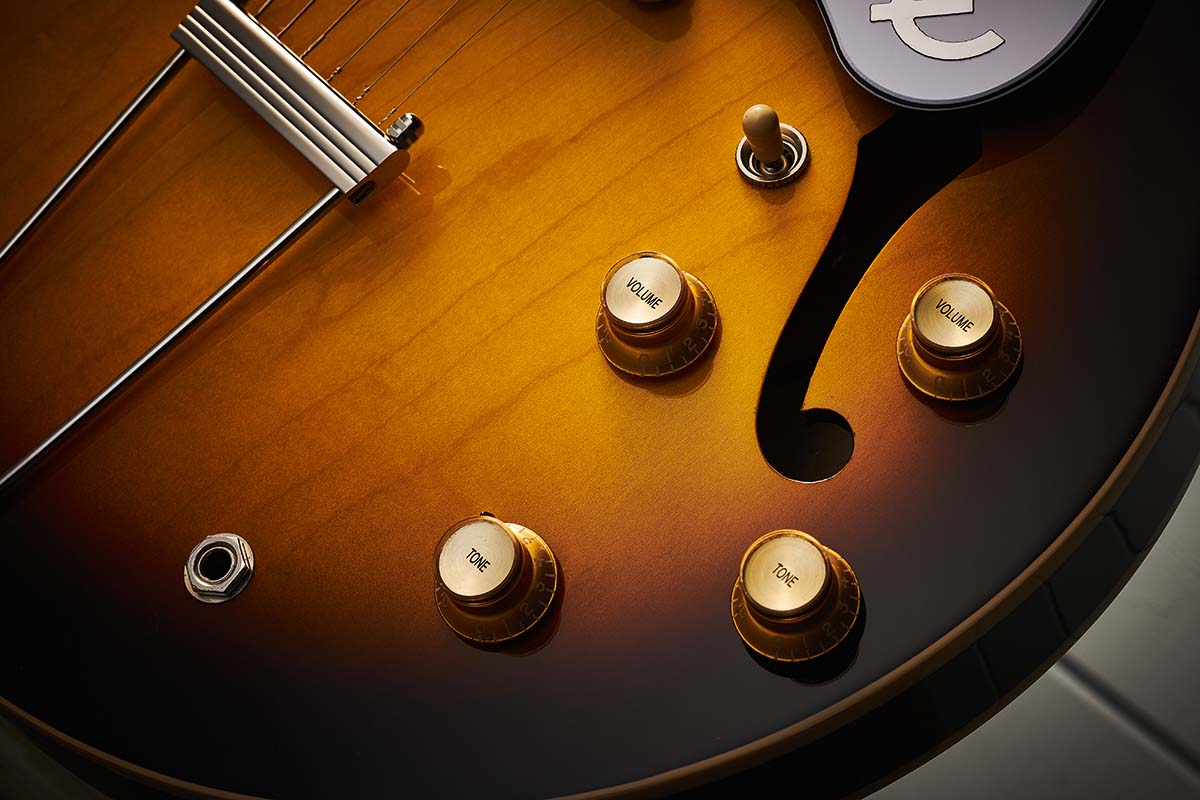
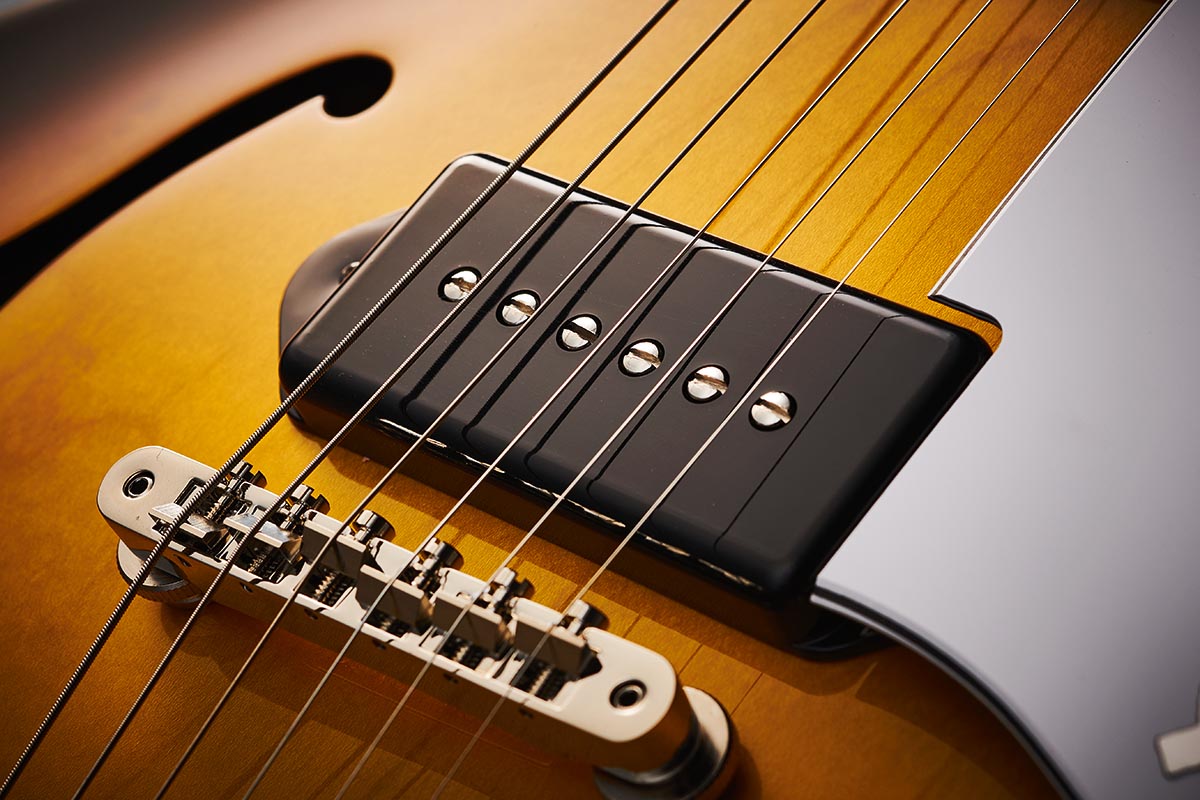
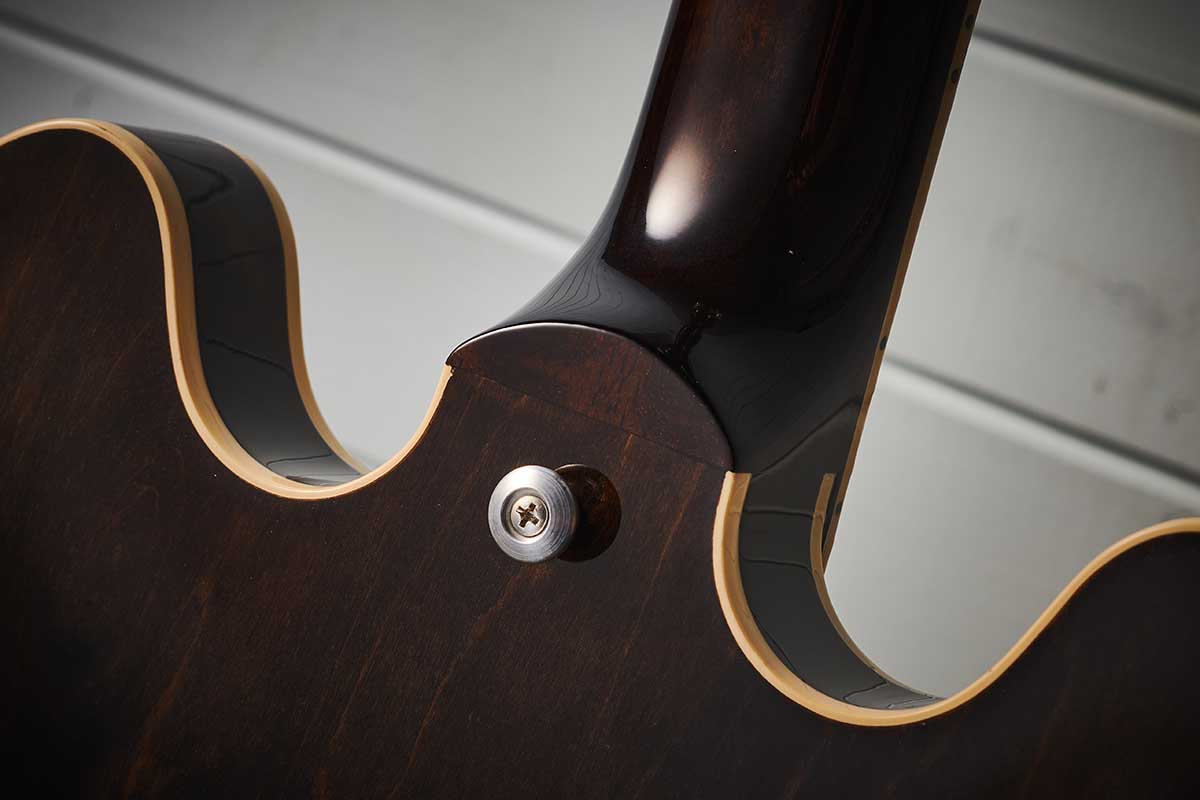
Ours has the original’s black covers and short headstock but retains the upgraded markers. Casinos were available with Epi’s own vibrato unit, but in the UK they were more commonly seen with a simple trapeze tailpiece (as on Lennon’s ’65 model) or the popular Bigsby (such as Paul’s ’62 and George’s ’65).
To confuse things further, Keef’s 1962 guitar had the Epi vibrato, short headstock, black covers and parallelograms, while McCartney’s (also a ’62) had nickel covers, short headstock and Bigsby. The model was clearly in a state of flux.
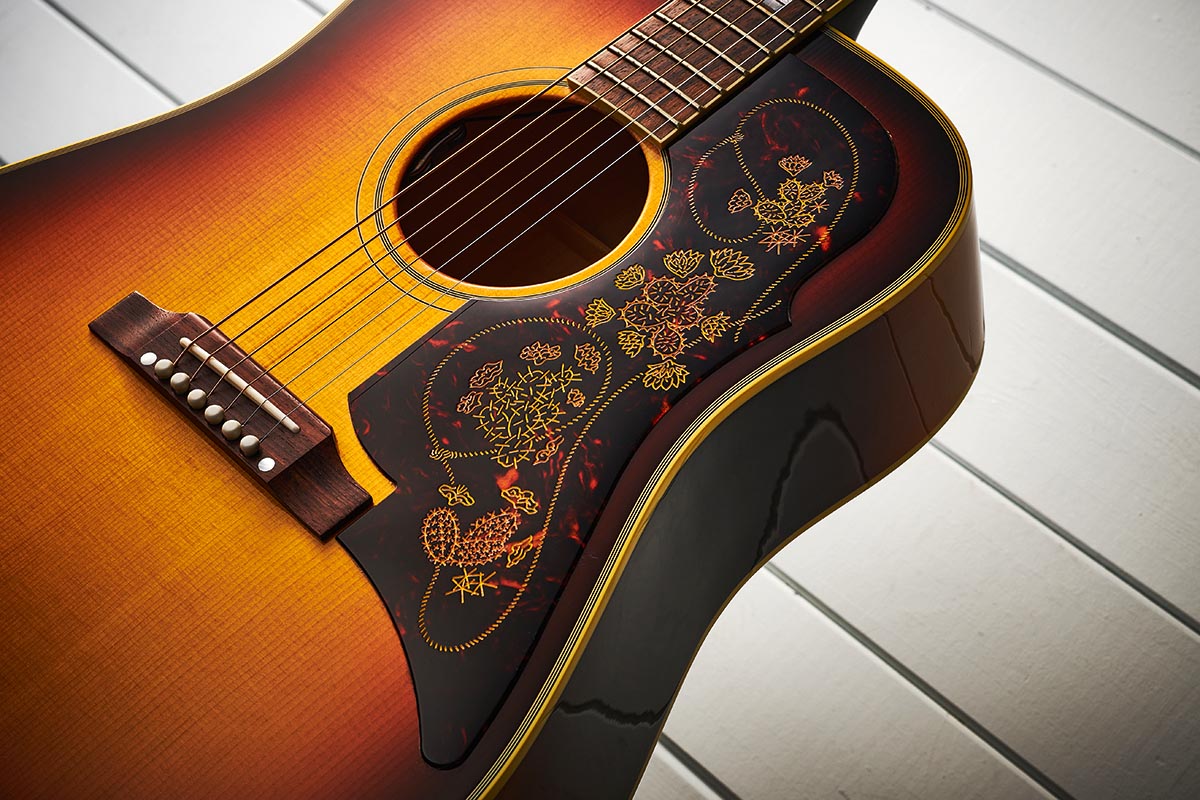
The Frontier acoustic, meanwhile, first appeared as the FT 110 as early as 1942. From introduction to 1948, it was – like this one – a square-shouldered dreadnought, before taking on the round-shouldered look from 1949 until 1957 when Gibson purchased the company.
The model returned as the FT-110 Frontier in 1958, once again sporting the square shoulders we see here. Given that the Dove and Hummingbird didn’t emerge until 1960, it seems that here Gibson took a lead from its new sister brand.
But enough of looking back. Let’s see how our two different models fare in today’s world and when played alongside the Gibson ES-335 and Hummingbird from this reviewer’s own small roster of instruments.
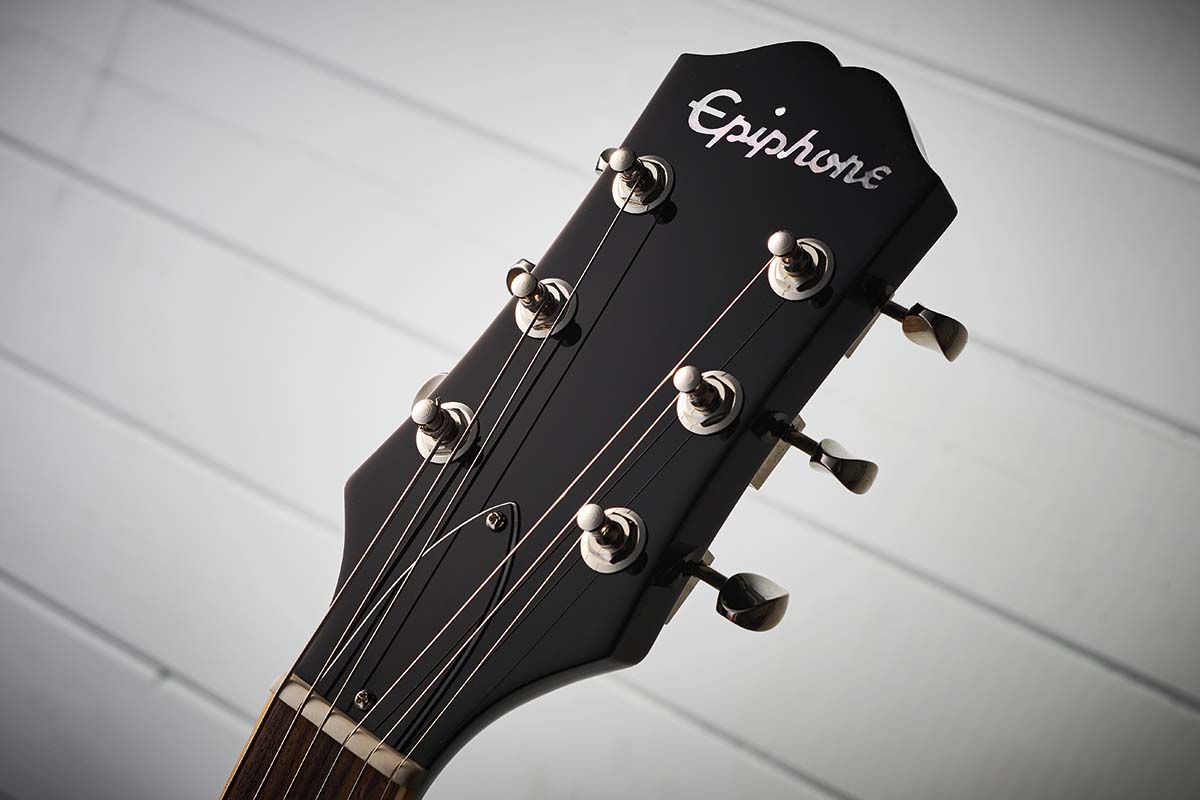
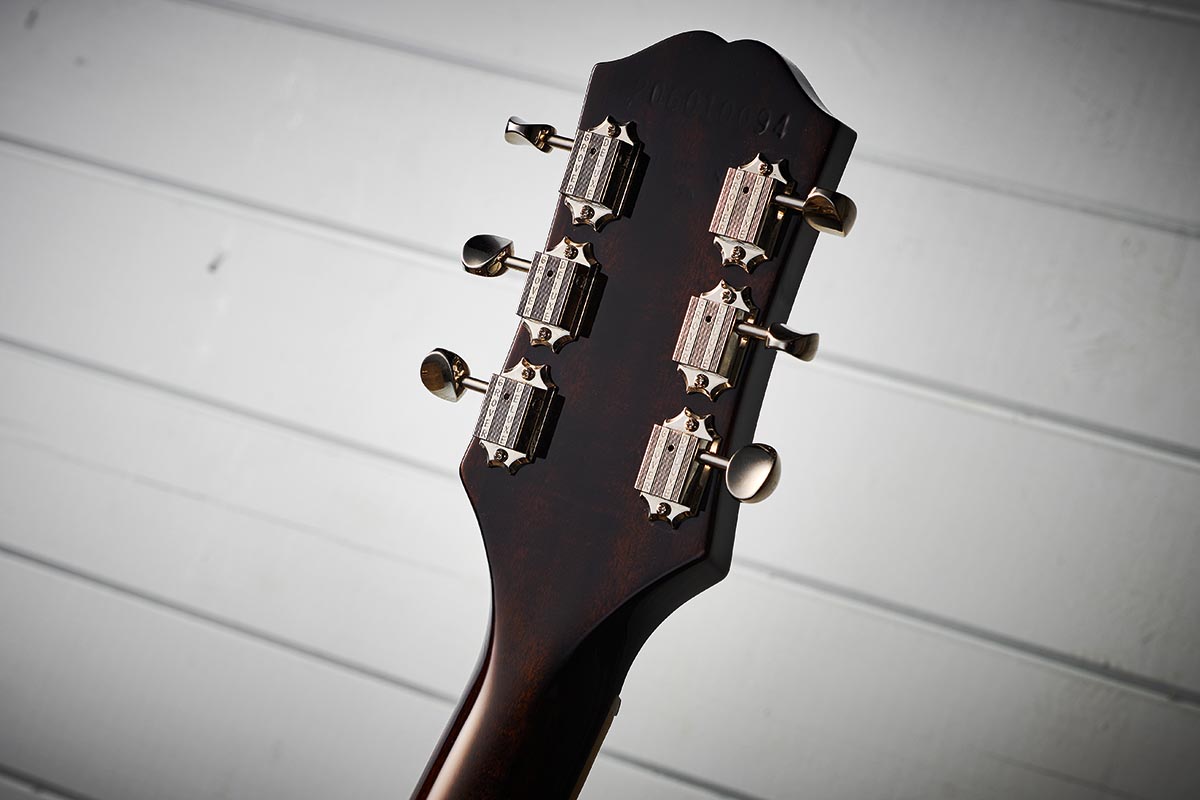
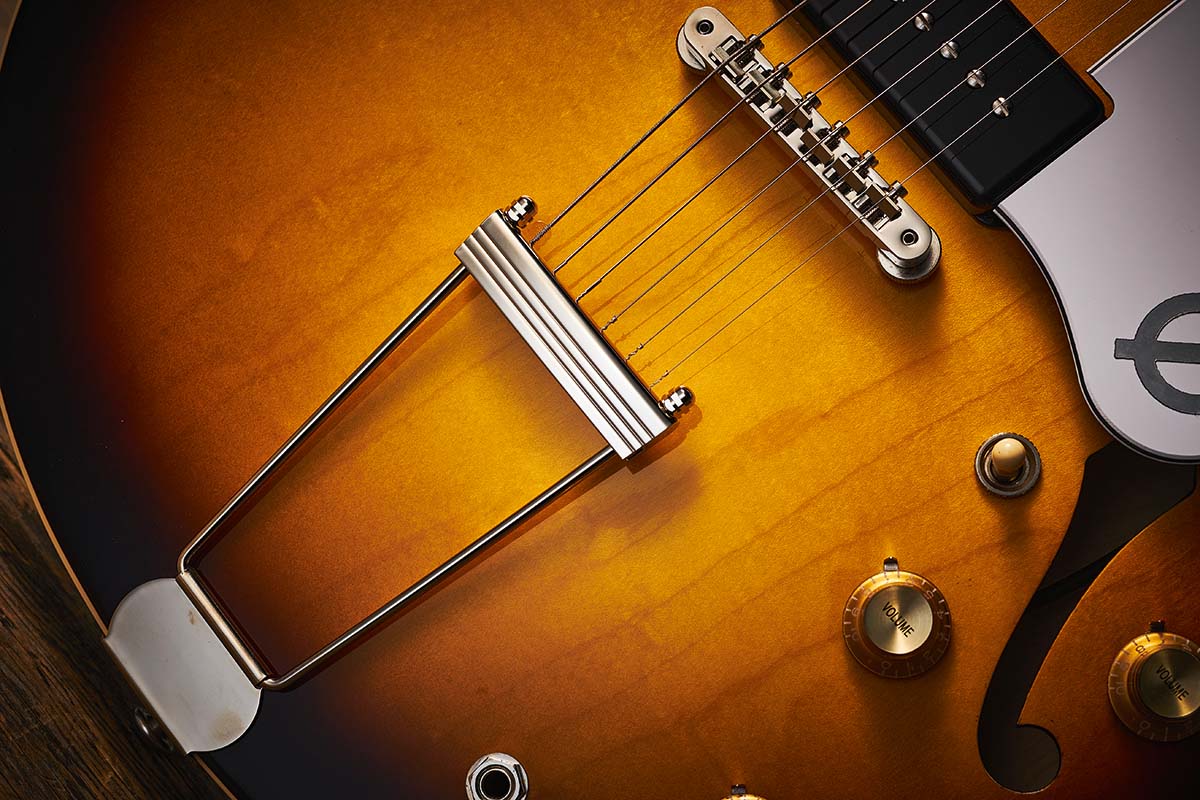
FT110 Frontier
What a handsome thing! Built in Gibson’s acoustic facility in Montana, the Frontier features solid flamed-maple sides and back. The top is solid Sitka spruce with scalloped bracing, the fingerboard Indian rosewood, with the nut and bridge saddle both in bone.
It also has the excellent LR Baggs VTC under-saddle pickup with soundhole-mounted volume and tone controls. As usual with electrified acoustics, there’s an endpin jack, plus there’s a second pin on the guitar’s heel so the Frontier comes stage-ready.
Tuners are gold-plated Gotoh takes on the Kluson ‘keystone’ style found on so many Gibsons – and indeed the Frontiers that the company produced. Of course, the Frontier stands out visually due to that striking pickguard, with what Gibson calls a ‘lariat and cactus’ themed engraving.
The Frontier is a great all-rounder for almost any occasion – but on stage it will really look the business!
Fret markers are slotted rectangles in mother-of-pearl, and the body is edged front and back in multiple cream and black binding. Whereas Gibson sunbursts usually form a teardrop shape on the guitar’s front and back, Epiphones follow the body’s outline with an even band of colour all the way round.
Peering inside, the guitar is put together cleanly, as good as anything else out there (vintage Gibsons and Epiphones could be quite scruffy in that regard). The scalloped spruce bracing lends rigidity and flexibility without sapping the instrument of tone, as heavy bracing can do. Finish, too, is exemplary, the nitrocellulose lacquer being flat and buffed to a perfect gloss.
E230TD Casino
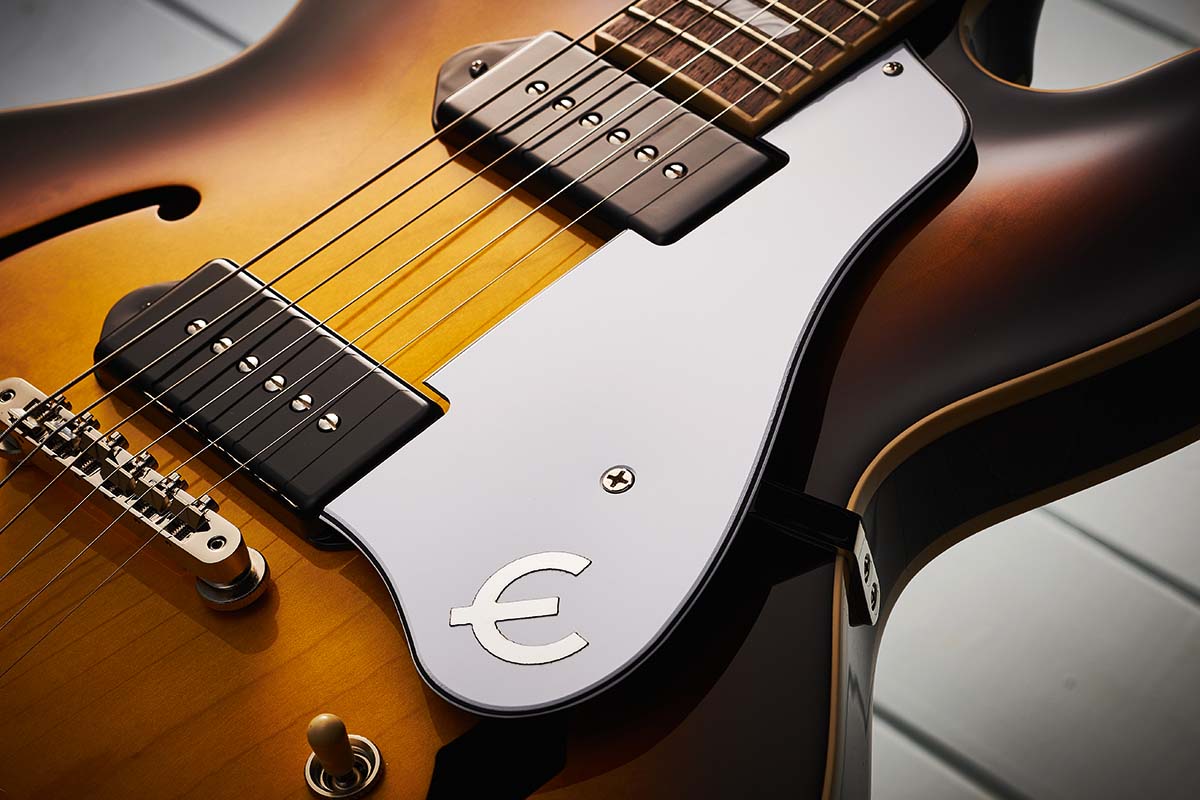
As mentioned in the preamble, this particular Casino is not a period-correct reissue, more a general take on the model for today. It’s a regular model, not a Custom Shop build, and sits within the Epiphone USA collection. With that in mind you’ll notice the thicker fingerboard binding, as seen on non-Custom Shop Les Pauls, as well as a modern version of the Kluson metal button tuners found on the originals.
Essentially an Epiphone-badged Gibson ES-330, the Casino comes with a laminated maple-poplar-maple construction with no centre block. The neck joins the body at the 16th fret as opposed to the ES-335’s 19th, which tended to put serious soloists off the model. It was perfect for rhythm, riffs and middle-of-the-neck solos, but problematic for blues wailing or rock wig-outs.

As well as physical limitations, the guitar’s all-hollow nature rendered it tricky to use in big-volume, high-gain situations due to howling feedback. However, that didn’t deter some very famous players; as well as the aforementioned, we can count Paul Weller, The Edge and Gary Clark Jr as Casino stalwarts.
You can clearly see the difference between Gibson and Epiphone ’bursting here. On an ES-330 both horns would feature solid colour, whereas here the ’burst follows the body outline right round. Subtle details such as this, the white pickguard with ‘E’ logo, as well as the different headstock shape, were enough to give the model a personality of its own. They also made it a striking stage or TV guitar.
Other details include the trapeze tailpiece with three-stripe crossbar as opposed to Gibson’s with its embossed diamond, ‘bullet’ truss-rod cover, gold knobs for volume (two) and tone (two), as well as a three-way toggle for selecting or blending pickups. The internal loom includes braided shielding wire and orange drop capacitors, all hand-assembled and loaded via the rear pickup cavity into the body.
Like the Frontier, all is ship-shape in the build and finishing departments and, despite the lack of true vintage accuracy, the guitar exudes a genuinely exciting vibe. Whether it’s pure nostalgia or not is hard to say, but it has put a smile on the face of everyone who’s seen it.
Feel & Sounds
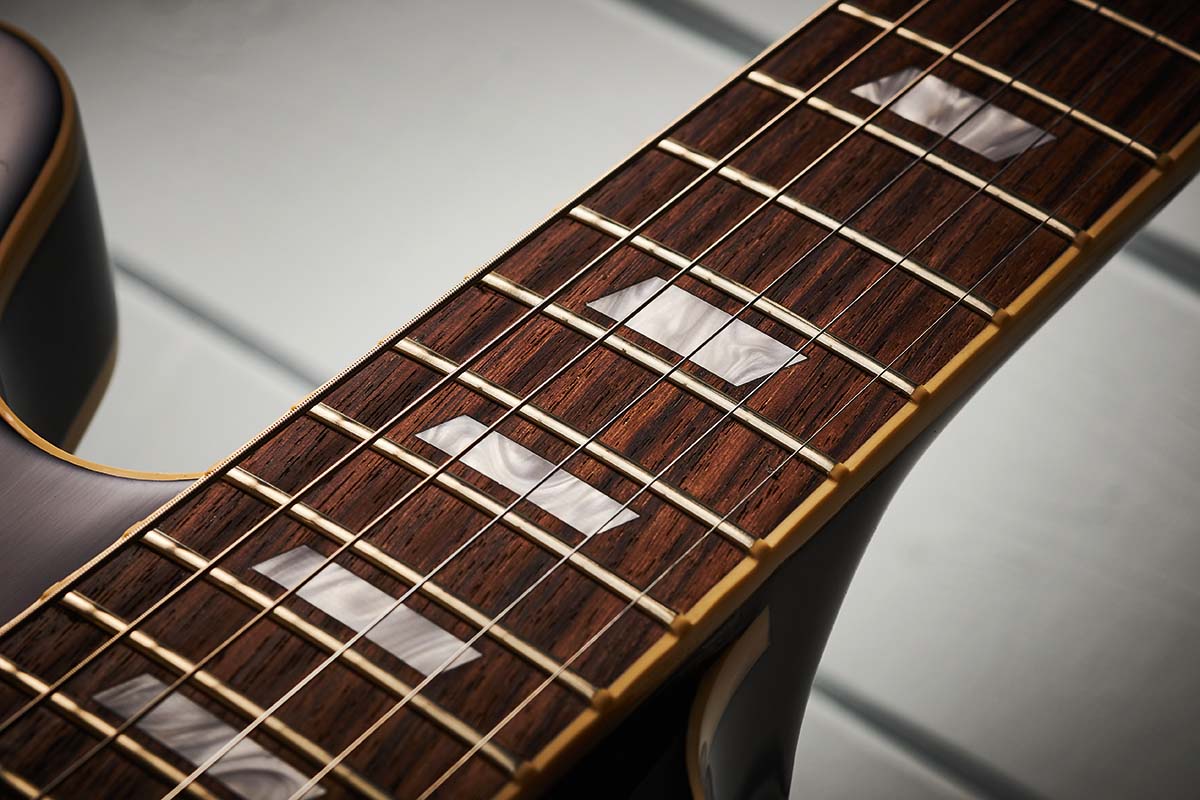
Starting with the FT110, we should note that while Gibson acoustics tend to adopt the company’s nominal 629mm (24.75inch) scale length, the Frontier has the full 648mm (25.5 inches) as found on dreadnoughts such as Martin’s D-28. This can lend a slightly tighter feel, but it also tends to bring a little more depth and clarity.
As in all things acoustic, the differences are subtle, but in the case of our Frontier it seems to result in an instrument of great balance and clarity of voice. The action is perfect and the neck’s medium C shape feels just right – perfectly in tune with the scale length and Epiphone’s choice of 0.012-gauge strings.
The guitar works well as fingerpicker or strummer, the almost 44mm (1.725-inch) nut width providing all the space you need for intricate chording, and the larger body size bringing power and clarity without the low-end boom that afflicts some dreads.
Certainly there’s more muscle than on this writer’s own Gibson Hummingbird, which has a more polite but possibly sweeter tone – the Epi comfortably trounces it in a show of strength. Rather than exhibiting bright or brash tendencies, as you might expect from maple, it offers depth, power and balance.
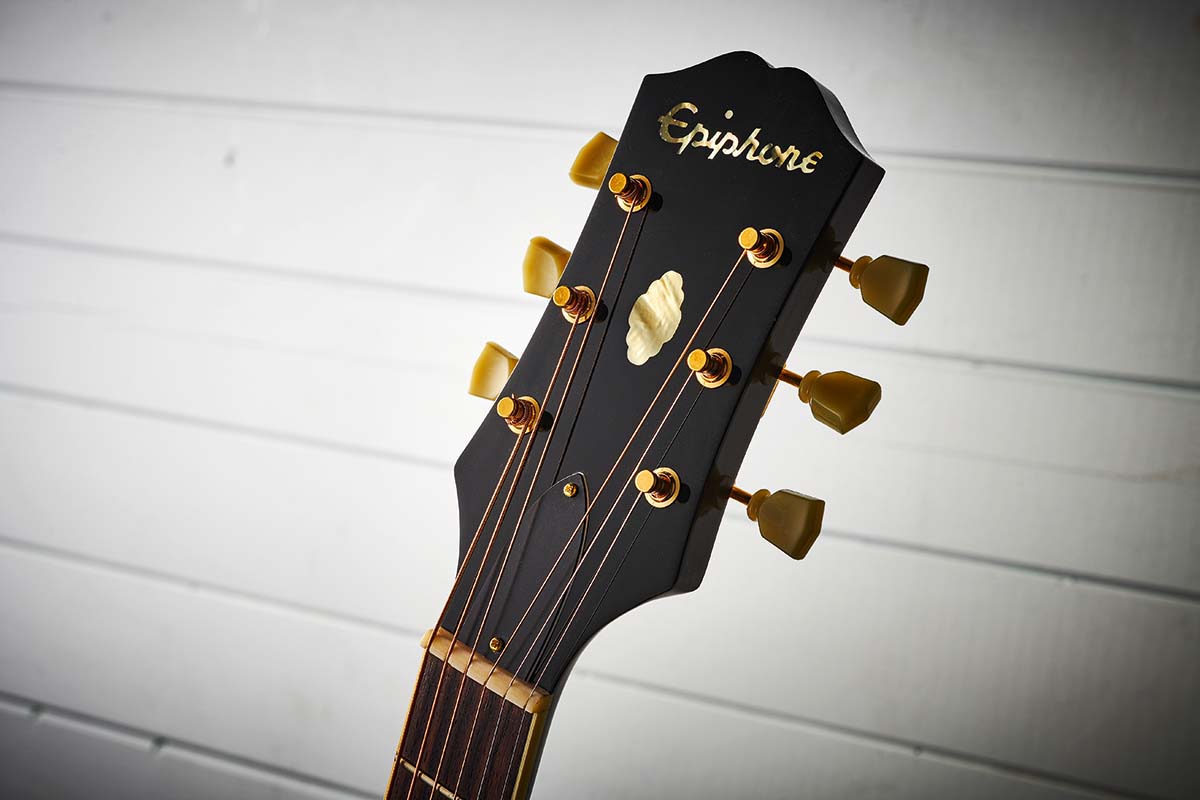
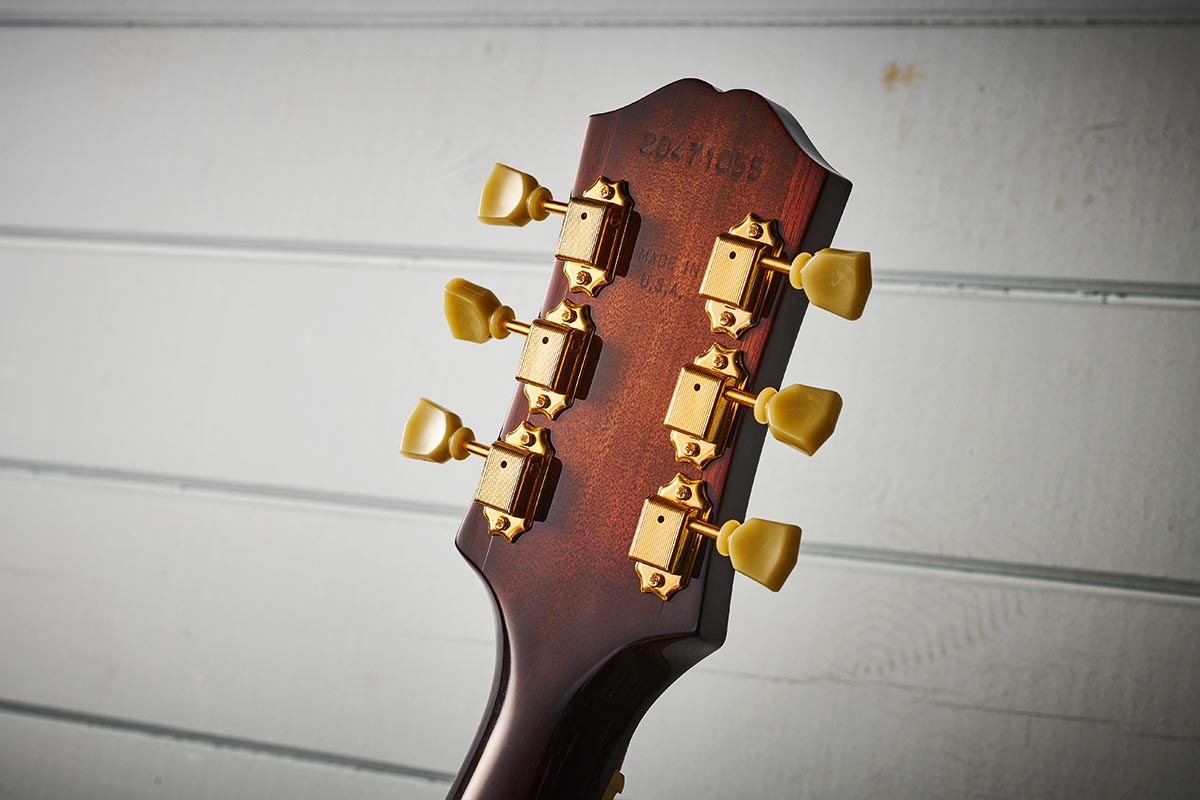
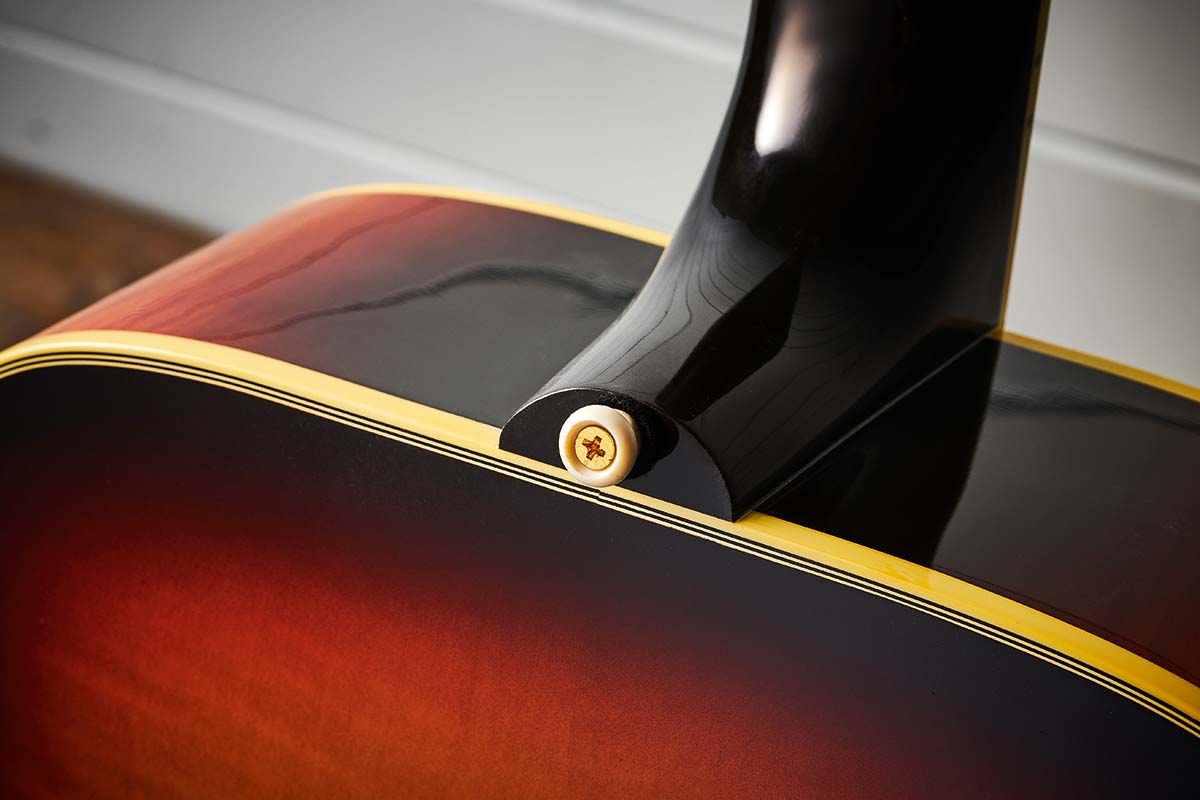
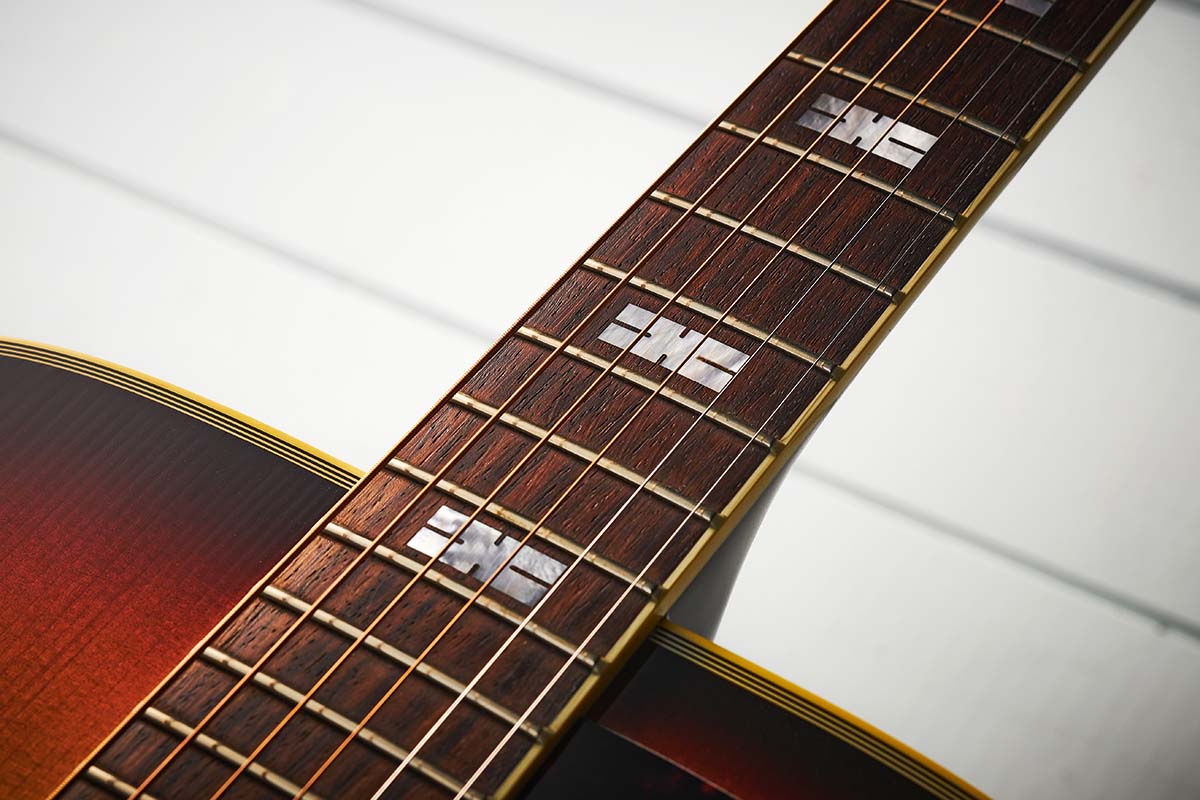
Plugging in, the LR Baggs Element VTC (Volume, Tone, Compression) doesn’t disappoint. The straight Element is a fine under-saddle system, but with the low-frequency compression provided by the VTC, an extra level of acoustic ‘truth’ is revealed. This is a great all-rounder for almost any occasion – but on stage it will really look the business!
Moving on to the Casino now, and Gibson really has got its neck shapes right at the moment. The Casino features a medium C profile and medium jumbo frets, plus the slightly wider binding means you’re less likely to fall off the edge with over-enthusiastic vibrato.
Again, like the Frontier, the action is spot on out of the box. It’s great fun to try all those well-worn riffs, chords and solos and the guitar’s hollow body provides a pleasing amount of acoustic volume.
With a nut width a tad under 43mm (1.687 inches), the neck is easy for open-position chords and licks, and provided you don’t need to access the 20th fret, it’s a joy to play – although it’s surprising what you can do when access is limited, just ask a certain Mr Hendrix.
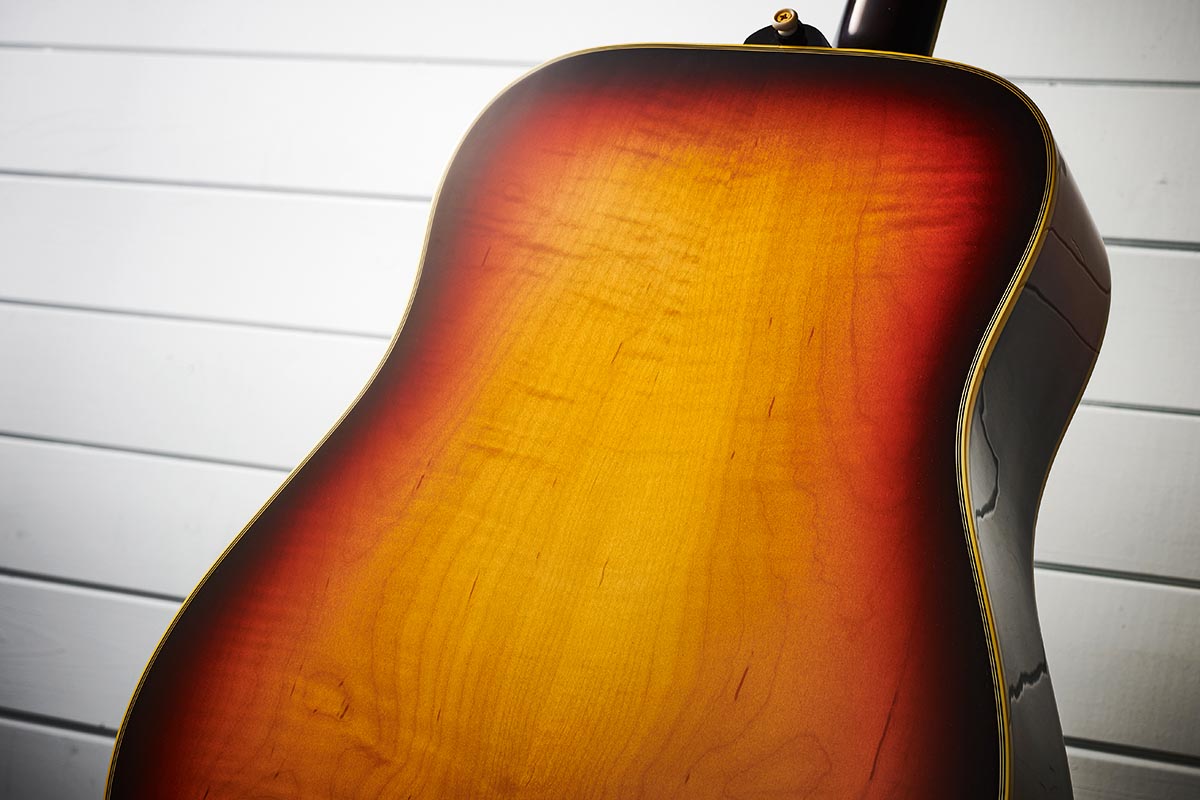
Compared with an ES-335 that we have on hand, the Casino is a different animal altogether. The black ‘dog-ear’ P-90s sit a long way from the strings and the temptation would be to fit some P-90 shims to alleviate this. They are readily available in different thicknesses.
That aside, the Casino remains a powerful guitar brimming with the well-known P-90 honk that can scare those not used to the pickups but delights those who are – and know how best to employ them.
A guitar such as this is so versatile it could excel at any style from pop to blues to jazz: the bridge pickup, with the tone rolled back and the tiniest bit of drive added, is vintage blues heaven; switch across to the neck and it’s glorious jazz territory.
Of course, no-one would buy a guitar like this for rock, so the fact that it’s not cut out for such excesses is just as well. Compared with the oh-so-sophisticated ES-335, this is earthier – dare we say more ‘organic’? Anyway, it’s easy to see why so many top players have chosen it.

Verdict
Whether or not the prestige of the Epiphone brand has been compromised by 40 years of offshore manufacture, who can say? But no matter, these are legendary instruments in their own right. And when you consider what music was created on the originals, we hope they’ll be as well received as they deserve to be.
The classy-looking Frontier would look great slung around the neck of any superstar, fingerpicking a singer-songwriter number in the studio or bashing out a bluegrass rhythm. It’s exceptionally well made and plays great, plus it sounds polished and well rounded, whether plugged in or not.
The Casino is a very well-built example of its breed. It looks great and sounds epic, even with those low-slung pickups (which some prefer as they can sound sweeter that way), and would suit almost any situation. All that aside, we’re delighted Gibson is once again building top-quality Epiphone-branded guitars in the USA.
Specs
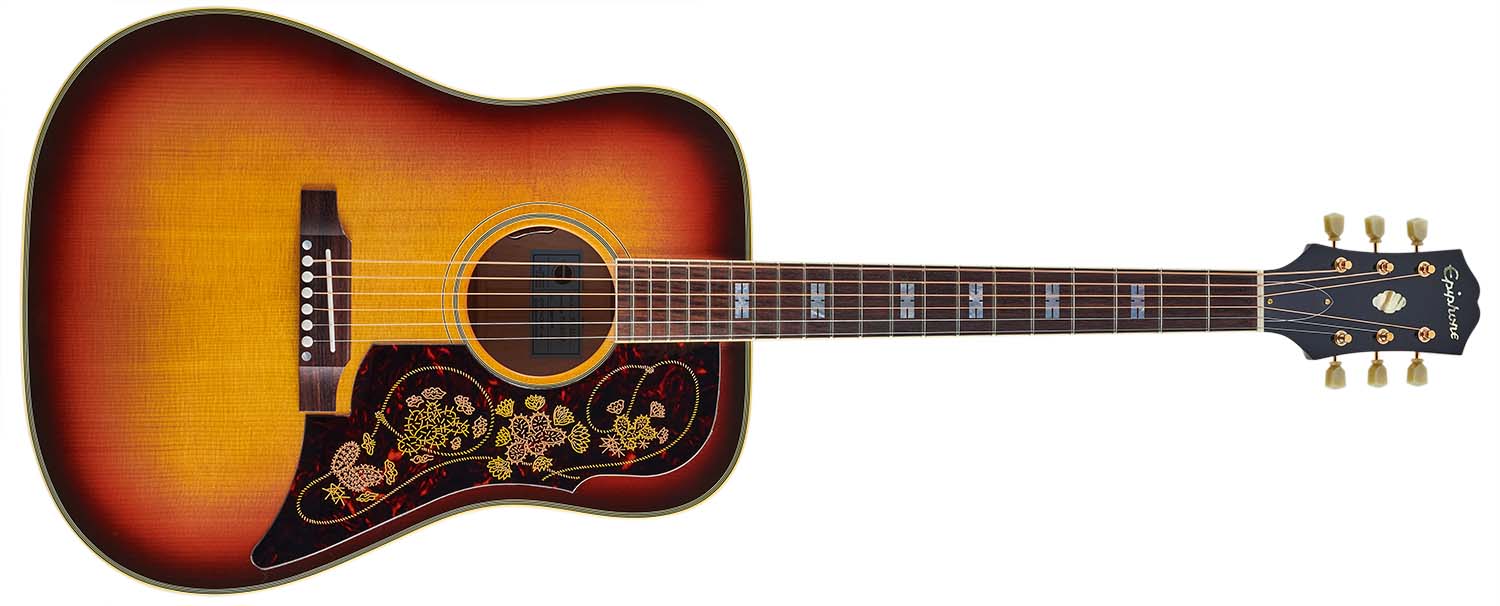
- PRICE: $3,999 / £3,619
- ORIGIN: USA
- TYPE: 14-fret dreadnought acoustic
- TOP: Solid Sitka spruce, scalloped bracing
- BACK/SIDES: Solid flamed maple
- MAX RIM DEPTH: 118mm
- MAX BODY WIDTH: 405mm
- NECK: Mahogany
- SCALE LENGTH: 648mm (25.5”)
- TUNERS: Gotoh ‘keystone’, gold plated
- NUT/WIDTH: Bone/43.82mm (1.725”)
- FINGERBOARD: Indian rosewood, bound, with split rectangle inlays, 12” radius
- FRETS: 20 medium
- BRIDGE/SPACING: Indian rosewood with bone saddle/54mm
- ELECTRICS: LR Baggs Element VTC, with soundhole volume and tone, endpin jack
- WEIGHT (kg/lb): 1.70/3.74
- OPTIONS: None
- RANGE OPTIONS: None
- LEFTHANDERS: Yes, £3,610
- FINISHES: Vintage Sunburst, Antique Natural
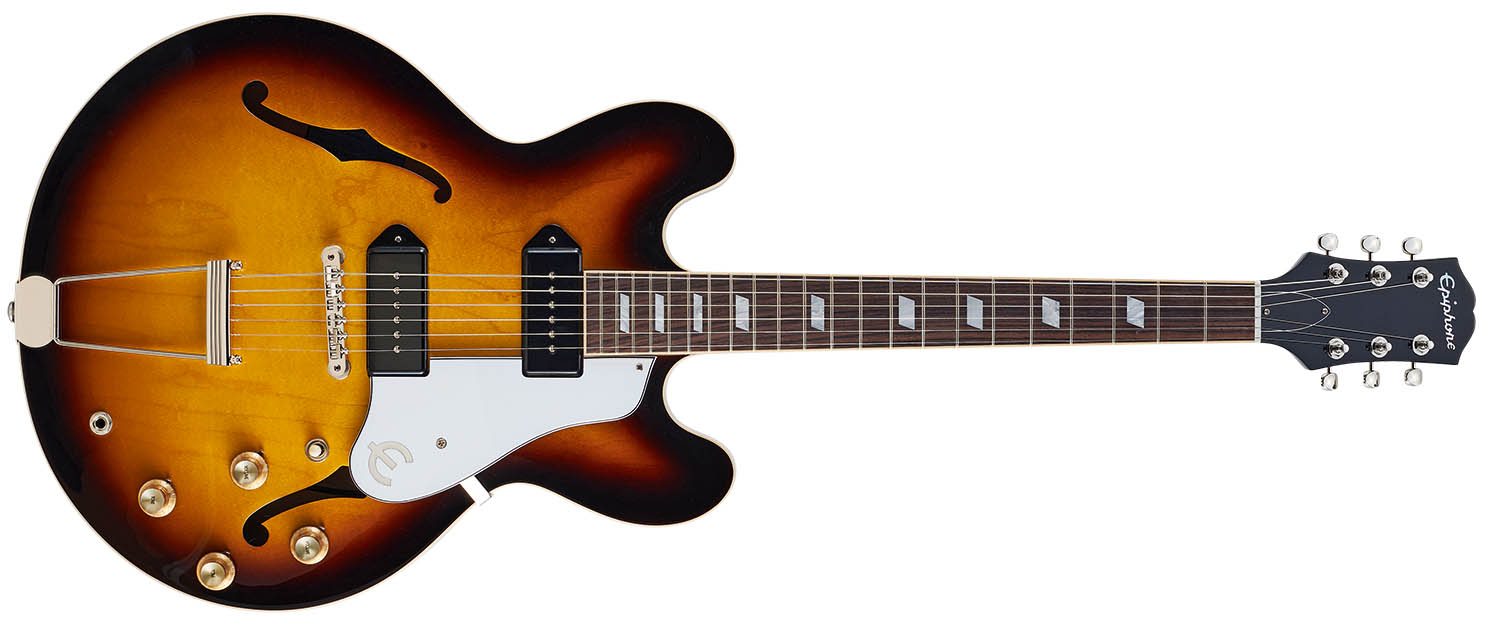
- PRICE: $2,699 / £2,399
- ORIGIN: Nashville, Tennessee
- TYPE: Double-cutaway hollowbody electric
- BODY: Maple-poplar-maple laminate
- NECK: Mahogany, medium C profile, glued-in
- SCALE LENGTH: 624mm (24.56”)
- NUT: Bone
- FINGERBOARD: Indian rosewood, bound with pearloid parallelograms
- FRETS: 22, medium jumbo
- HARDWARE: Epiphone tune-o-matic bridge and trapeze tailpiece, enclosed tuners with round buttons – nickel plated
- STRING SPACING, BRIDGE: 52mm
- ELECTRICS: 2x Gibson P-90 ‘dogear’ pickups, twin volume and tone controls, 3-way selector, orange drop capacitors
- WEIGHT (kg/lb): 2.54/5.6
- OPTIONS: None
- RANGE OPTIONS: None
- LEFTHANDERS: Yes, £2,399
- FINISHES: Vintage Burst (as reviewed), Royal Tan
- CONTACT: Epiphone
In the late '70s and early '80s Neville worked for Selmer/Norlin as one of Gibson's UK guitar repairers, before joining CBS/Fender in the same role. He then moved to the fledgling Guitarist magazine as staff writer, rising to editor in 1986. He remained editor for 14 years before launching and editing Guitar Techniques magazine. Although now semi-retired he still works for both magazines. Neville has been a member of Marty Wilde's 'Wildcats' since 1983, and recorded his own album, The Blues Headlines, in 2019.
“It holds its own purely as a playable guitar. It’s really cool for the traveling musician – you can bring it on a flight and it fits beneath the seat”: Why Steve Stevens put his name to a foldable guitar
“Finely tuned instruments with effortless playability and one of the best vibratos there is”: PRS Standard 24 Satin and S2 Standard 24 Satin review
